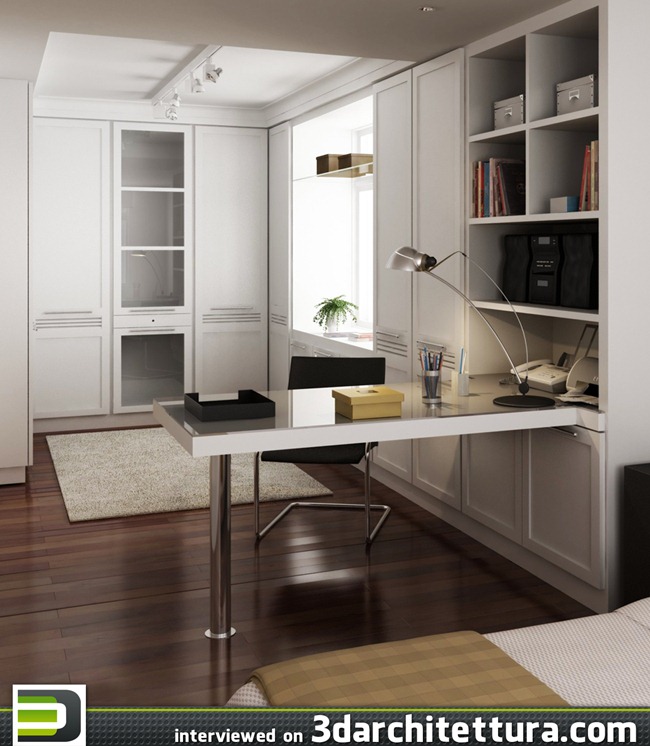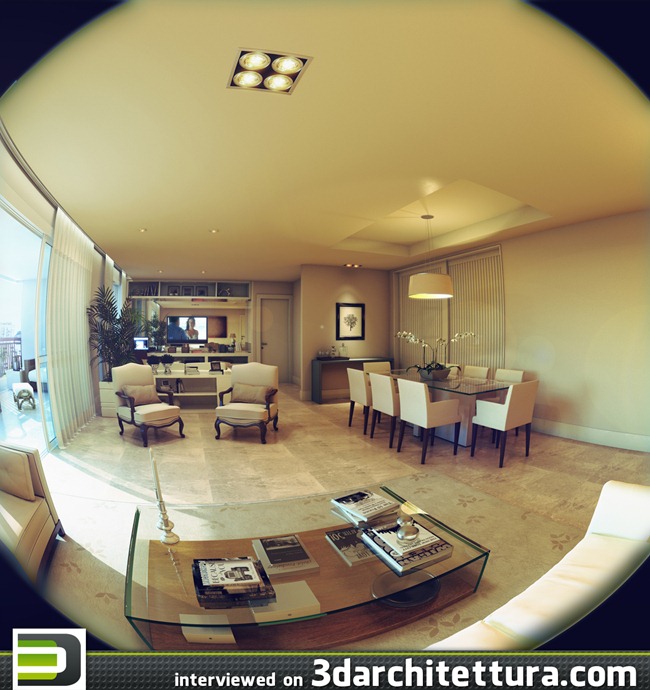Name: Derek Henriques
Age: 29
Job: animator/3d-generalist
Country: Brazil
Facebook: https://www.facebook.com/derek.henriques.9?fref=ts
3DA: Why have you decided to work in 3d-field and when have you started?
DH: Well my first contact with art, came through music! I started studying it when I was 13 and at the age of 17 I had the idea of studying some 3D software to rough out the cover of my CD (which I never finished). After 2 years flirting with 3ds Max, I got an unexpected chance to work at Digital Light which is now , one of the biggest architectural visualization companies in Brasil.After about 3 years, I started my own studio, three years later I decided it was time to study animation which had been a huge passion ever since I started studying 3D. I moved from São Paulo to the city where I was born, Rio de Janeiro. There I worked for about 2 more years at Domus arquitetura then I finally got a chance to work closer to animation which I had just finished my studies, a couple of freelances and even a teaser for a short film I did with my friend Victor Hugo!
He was actually ,during the process of making our short/teaser thing, the guy who mentioned my name at TechnoImage, the company I’m working at today!
3DA: Describe to our readers your usual workflow
DH: My workflow varies according to the type of project. But, lets say it is an average arch vis living room image: I model everything starting by the structure and the room itself. Walls, floor, ceiling, doors, windows and everything related. Then I merge the separate furniture models. If not textured, I texture them and work on the shaders. But not digging very deep in it.
After having putting everything in place and having some shaders applied its time to work really hard on lighting and shading together I try my best to work on real word colors and scale so that is a rule of thumb. Check the scale and proportions of everything in my scene before start lighting it. Then I get a photo reference with the same lighting conditions I want. If it is a dark pool room at night, I will never use some wooden living room with huge windows in a sunny day for the sake of exaggerating the example! haha
One thing that always strikes me when following the references is the amount of saturation and contrast real life photos have. A real photo of a wood floor will be really saturated and with lots of contrast depending on the camera and setup, So that’s why I use gamma 2.2 on the input for the texture maps as well
When working on shading and lighting, I always try to separate them by lighting everything with an overall grey shading, and some reflection, diffuse and refraction channels. That way I can see if my lighting is the problem or maybe just the lack of reflection here and there. At last but not least, I always work on contrast, color balance and some more photoshop stuff!
Here is a VIDEO in which I did pretty much everything. From modeling the rooms to every shader, lighting, direction, editing and post producion! I am super proud of it!
3DA: What was most difficult for you when you just started working in 3D? And what is now?
DH: For me, was understanding the connection between the tool and the art. I see many people who want to get into CG, looking too much to the tool and not at all to the art. Once I understood I had to study photography, posing, composition, even how a camera work, cinema, movement, colors and everything, my work started getting better.
3DA: Looking back on your education process what you would have changed now? And what you consider right and would do exactly the same?
DH: I learned a lot just by studying at home, reading books and searching on forums and everything. I regret not doing it more. Also, personal projects are really important. Each one with an specific goal, be it learning some of light behaviors, experimenting with colors, different conditions, forms, interior design ideas, experimenting with shaders and trying to reach realism, learning how to fake something is really-really important as well. So I regret not trying it more too. I did only a few which I am really proud of and all of them made me grow a lot as an artist as well as a technician per say.
3DA: Which was the biggest problem that you faced working on a project and how have you solved it?
DH: Well, I would say that the biggest obstacle to overcome is people. Not in a mean way, but I am and always was very careful about how to talk, react to criticism and how to suggest things. One of my former co-workers at Domus had the somehow annoying use of out of timing feedback. It started pissing me off after a while, but I liked the guy despite his professional ways. I just tried to put my ego aside and starting soaking up with every criticism he threw on anything I did, also, I politely told him sometimes that I was still working and that was just a WIP and I would really love to have his input in a few minutes. Without noticing he changed from someone who was making me pull my hair out to someone who I really admired and also who helped me grow as an artist! So people is sometimes the biggest professional obstacle. Dealing with it in the best and politer manner possible is a great way to create a good and healthy network as well as learn a lot!
3DA: What forecast you can make about the future of 3d-world in general?
DH: Well, I see an exponential grow in the quality of things being done when it comes to the 3d-world. My forecast is, they will certainly make a lot things become automatic and a billion times easier, BUT, the amount of work to be done is going to be a gazillion times bigger so I feel like there is still a lot of room to grow in this area and what will differentiate one company from another or one artist from another is the amount of investment in both technology and artistic know-how/knowledge.’

 Russian
Russian

























